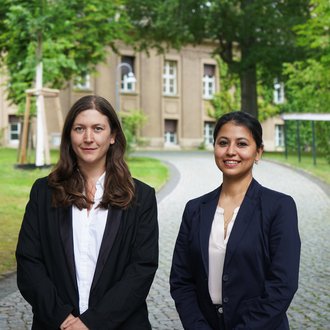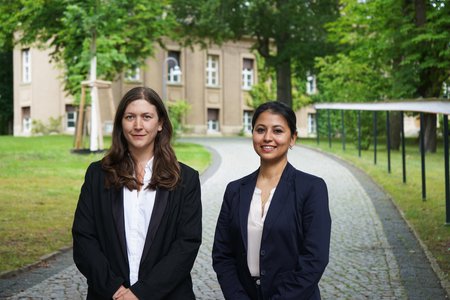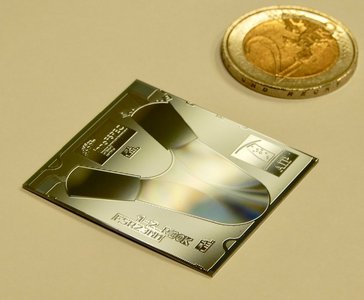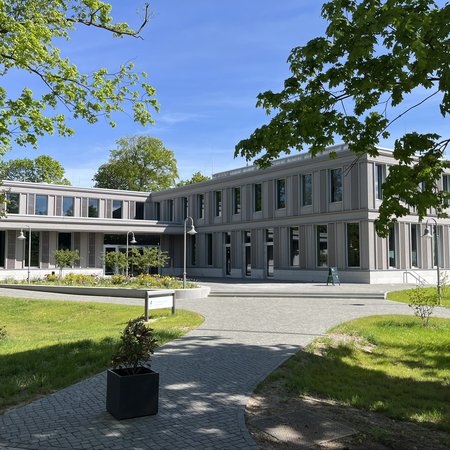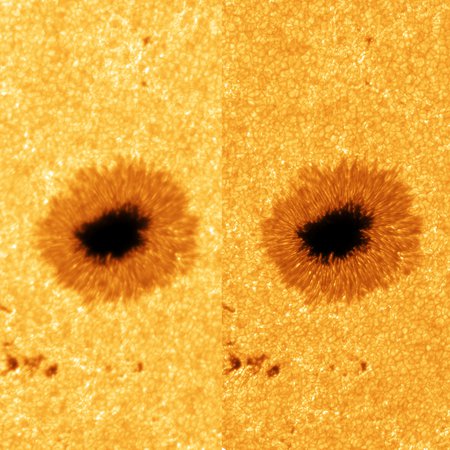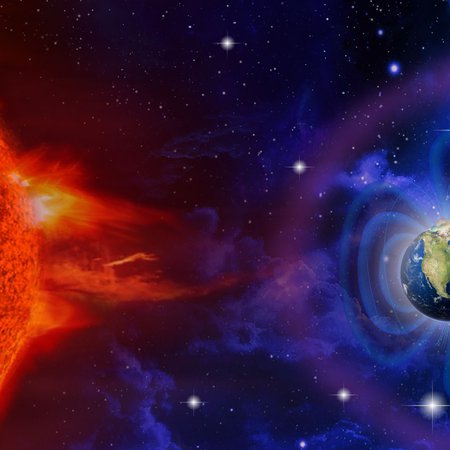Astrophotonics – an emerging field in astrophysics
Guest-edited by Dr Aline Dinkelaker and Dr Aashia Rahman in an international editorial team, two renowned journals in the area of optics and photonics have published a joint feature issue on the topic of astrophotonics, one of the research fields of innoFSPEC Potsdam at the Leibniz Institute for Astrophysics Potsdam (AIP).
Astrophotonics deals with photonic components for astronomy, which are intended to become an integral part of the next-generation astronomical instruments. Initiated by AIP researchers, the journals JOSA B and Applied Optics of the Optical Society (OSA) dedicated a joint feature issue to this topic. This feature issue, for which Dr Aline Dinkelaker and Dr Aashia Rahman acted as guest editors and contributed an introduction to the subject, looks into some of the significant developments in astrophotonics and shows the scientific maturity of this research field.
Collectively, more than 20 papers in different areas of astrophotonics, and their applications in instruments for astronomy, are being published from research communities worldwide. Dr Kalaga Madhav, head of the research group Astrophotonics at AIP, summarises the publications: “The articles from research groups around the world cover a broad range of astrophotonic topics, such as interferometric beam combiners to create extremely sharp images, e.g. of stellar surfaces or the environment of black holes, miniaturized spectrographs “on-a-chip” for next generation space telescopes, high precision frequency combs for the detection of exoplanets, and many more. The activities of the Astrophotonics group at AIP are prominently reflected in as many as six publications, after all a quarter of the papers in the feature issue”.
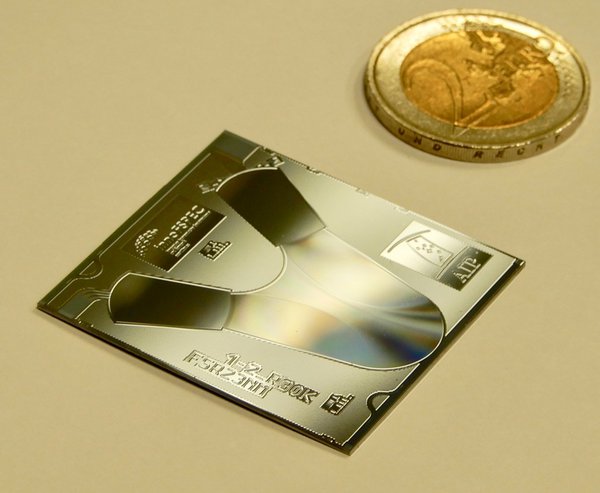
This astrophotonic spectrograph on-a-chip was developed at innoFSPEC. It can be used to replace the traditional bulky diffraction gratings used in astronomical spectrographs to split the starlight collected by a telescope into its constituent wavelengths. The presence or absence of specific wavelengths in the starlight reveals the properties of the star itself.
Credit: AIP/A. StollThe launch of this feature issue celebrates the ongoing progress in astrophotonics and its incorporation into instrument designs: Fibre-based spectroscopy, which started with novel designs at the onset of innoFSPEC, is now an established and trusted technology and is included in instruments such as the future telescope 4MOST. The same development is foreseen for astrophotonics at innoFSPEC, and the researchers are already establishing collaborations and testing their components at telescopes and in astronomical instruments. With reference to the future of astrophotonics, section head of innoFSPEC professor Martin Roth states enthusiastically, ”The emerging area of astrophotonics has already supported important discoveries in astronomy, e.g. the ground breaking work of Nobel laureate Reinhard Genzel about the black hole in the Galactic Center. Given the level of maturity and reliability that this technology has now reached, we expect that innoFSPEC, in collaboration with international partners such as the European Southern Observatory (ESO), will launch more exciting innovations”.
The excellence centers innoFSPEC in Germany and CUDOS in Australia were the first research groups to focus on exploring the diverse research areas under astrophotonics. However, the publication of this feature issue indicates that the emerging area of astrophotonics has now gathered momentum in many countries. The agreement for a joint astrophotonics research collaboration, signed between AIP and ESO in 2020, is another indication for the growing importance of the field. The editorial team of the feature issue consisted of nine members in total, with Professor Joss Bland-Hawthorn, an ARC Laureate Fellow Professor of Physics and Director of the Sydney Institute for Astronomy (SIFA) as the lead editor.
“As researchers in astrophotonics, we see how fast the field advances. With the feature issue, we wanted to provide a platform to showcase the progress and highlight this relatively young topic to scientists from other research fields. As experimental physicists, being guest editors for a journal was new to us. It was an exciting experience to be engaged in every level of the entire publication process, especially in the exchange with authors, journal staff, and the community. Accompanying the manuscript from submission through peer review, finally leading to a high-quality publication, is very rewarding”, say Aline Dinkelaker and Aashia Rahman, who since 2019 have been focusing on bringing the idea of this feature issue from conception to fruition.
Further information
More about innoFSPEC https://innofspec.de/
Featured papers:
M. Diab, A. Tripathi, J. Davenport, A. N. Dinkelaker, K. Madhav, and M. M. Roth, “Simulations of mode-selective photonic lanterns for efficient coupling of starlight into the single-mode regime,” Appl. Opt. 60, D9–D14 (2021). Arxiv: https://arxiv.org/abs/2103.14047
J. J. Davenport, M. Diab, K. Madhav, and M. M. Roth, “Optimal SMF packing in photonic lanterns: comparing theoretical topology to practical packing arrangements,” J. Opt. Soc. Am. B 38, A7–A14 (2021). Arxiv: https://arxiv.org/abs/2104.09354
E. Hernandez, M. M. Roth, K. Petermann, A. Kelz, B. Moralejo, and K. Madhav, “Mode expansion theory and application in step-index multimode fibers for astronomical spectroscopy,” J. Opt. Soc. Am. B 38, A36–A50 (2021). Arxiv: https://arxiv.org/abs/2105.00945
A. Nayak, L. Labadie, T. Sharma, S. Piacentini, G. Corrielli, R. Osellame, E. Gendron, J.-T. Buey, F. Chemla, M. Cohen, N. Bharmal, L. Bardou, L. Staykov, J. Osborn, T. Morris, E. Pedretti, A. Dinkelaker, K. Madhav, and M. Roth, “First stellar photons for an integrated optics discrete beam combiner at the William Herschel Telescope,” Appl. Opt. 60, D129–D142 (2021).
A. Benoît, F. A. Pike, T. K. Sharma, D. G. MacLachlan, A. N. Dinkelaker, A. S. Nayak, K. Madhav, M. M. Roth, L. Labadie, E. Pedretti, T. A. ten Brummelaar, N. Scott, V. C. du Foresto, and R. R. Thomson, “Ultrafast laser inscription of asymmetric integrated waveguide 3 dB couplers for astronomical K-band interferometry at the CHARA array,” J. Opt. Soc. Am. B 38, 2455-2464 (2021).
G. Robertson, S. Ellis, Q. Yu, J. Bland-Hawthorn, C. Betters, M. Roth, and S. Leon-Saval, “Seeking celestial positronium with an OH-suppressed diffraction-limited spectrograph,” Appl. Opt. 60, D122–D128 (2021). Arxiv: https://arxiv.org/abs/2106.09921
A.N. Dinkelaker, A. Rahman, J. Bland-Hawthorn, F. Cantalloube, S. Ellis, P. Feautrier, M. Ireland, L. Labadie, R.R. Thomson, “Astrophotonics: introduction to the feature issue”, Appl. Opt. 60, AP1-AP6 (2021).
A.N. Dinkelaker, A. Rahman, J. Bland-Hawthorn, F. Cantalloube, S. Ellis, P. Feautrier, M. Ireland, L. Labadie, R.R. Thomson, “Astrophotonics: introduction to the feature issue”, J. Opt. Soc. Am. B 38, AP1-AP6 (2021). DOI: https://doi.org/10.1364/JOSAB.434565
Images
Dr. Aline Dinkelaker (left) and Dr. Aashia Rahman (right).
Big screen size [1000 x 666, 110 KB]
Original size [6000 x 4000, 2.0 MB]
This astrophotonic spectrograph on-a-chip was developed at innoFSPEC. It can be used to replace the traditional bulky diffraction gratings used in astronomical spectrographs to split the starlight collected by a telescope into its constituent wavelengths. The presence or absence of specific wavelengths in the starlight reveals the properties of the star itself.
Big screen size [1000 x 823, 80 KB]
Original size [1024 x 843, 100 KB]
